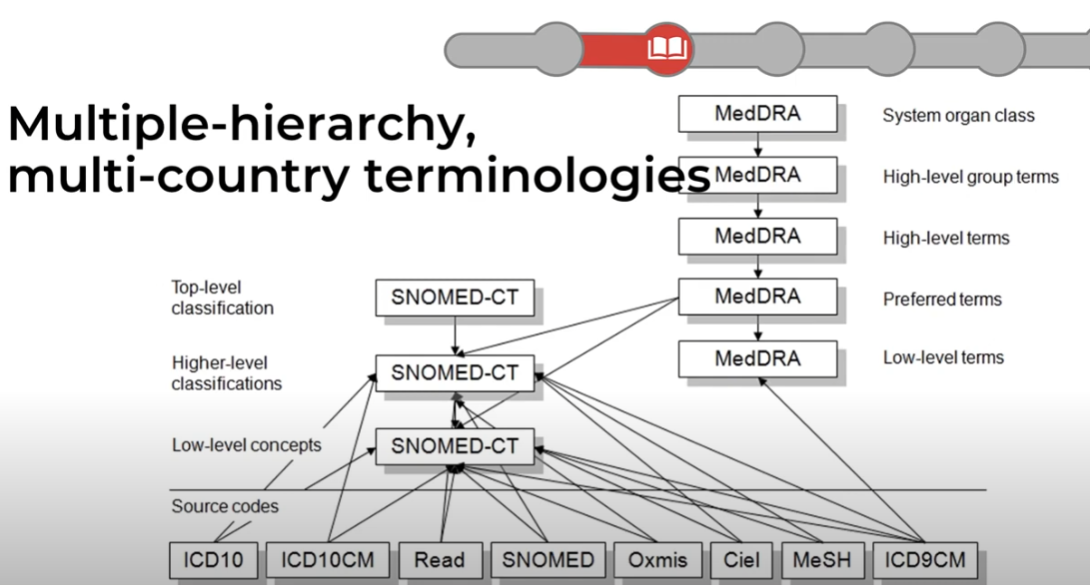Meeting Date
The DMRWG meets bi-weekly on Tuesdays at 12:00-13:00 PT / 16:00-17:00 UTC. Check the ToIP Calendar for meeting dates.
Zoom Meeting Link / Recording
Attendees
Main Goal of this Meeting
Presentation by Burak Serdar on Interoperability with Layered Schemas
Agenda Items and Notes (including all relevant links)
| Time | Agenda Item | Lead | Notes |
| 5 min |
| Chairs |
|
| 5 mins | Review of action items from the previous meeting | Chairs | Presentations:
|
| 45 mins | Presentation: Interoperability with Layered Schemas |
Burak has been using his "layered schema" extended metadata model as a core component to provide data transformations of medical data for different analytic purposes for the last 18 months. The worldwide medical data industry has been striving for data standards for capturing, transforming, and analyzing data for many years. This has resulted in multiple standards, plus several different approaches to harmonizing those standards, including building mental models, vocabularies, and ontologies (Wikipedia) - which is an attempt to model data, relationships, and concepts, plus apply categorization and classification. The reality is that every attempt at a newer, better, more comprehensive standard just creates another standard. Active existing standards will not be abandoned as there is too much invested. The only pragmatic solution is a data exchange/transformation approach that deals with multiple standards and supporting information. An example of this in the medical industry in one application that Burak is supporting is the Observational Health Data Sciences and Informatics (OHDSI) OMOP model/ontology, which Burak features in his current work. As shown in the OMOP approach, the solution to multiple standards is to recognize the commonality from a data semantics (meaning, purpose vs. data structure) perspective and build an abstract data model (a meta-model), which ideally has a single structure into which different standards can be mapped. Other complications include different data schema representations (RDP, JSON-LD, XML, JSON, relational, (property) graph), and local variations in data schema implementation. Another lesson learned is that the destination purpose - what type of analytics are to be done - are a bigger driver of the "output" format for the data transformation than to a single data schema structure for all analytic tasks. While data (everywhere) will continue to evolve, the right abstract data model can adapt and simplify transformation for current and future analytic purposes. The flip side is that if developers of data objects (e.g., VCs) within a given domain (medical, travel, banking) do not work from a common set of data concepts, then data interoperability and transformations can become much more complex (approaching N2 if no two data sources have the same data structure/schema), or even impossible if the data is conceptually different for the same common purpose. For example(1), COVID-related VCs, which people present to enter a Country.
The data is completely different, as are the rules on what how to evaluate the answer to the question - Are you medically fit to enter Country (X)? The VC data and evaluation rule(s) are incompatible, so the transformation is impossible; interoperability fails. (1) the COVID health example is purely illustrative, but this type of semantic difference was evident in many countries in the July to Nov 2020 timeframe. It's a bit ironic that in 2022, due to a lack of agreement on electronic COVID certificates and their data, we've all been using paper copies or PDF COVID vaccination documents for the last 18 months. | |
| 5 mins |
| Chairs | The next meeting (Tues, Dec 13, 2022) is planned to be a presentation from James Schoening. The alternative will be a presentation on a generic ToIP data exchange model, with support for DIF Data Agreements (for which there is a new spec proposal from igrant.io), which folds in Notice, and Receipts Given that there is likely no meeting in the Christmas to New Years period (Dec 27), the next meeting post-Christmas is Jan 13, 2023 |
Screenshots/Diagrams (numbered for reference in notes above)
The above is an example of the abstract model that the OMOP medical common model (note all the different standards used), which is an actively used interoperability model which supports combining data from all of the listed standards into a single queryable data structure
